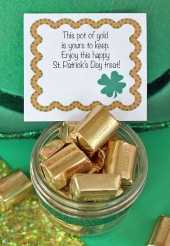
 2
2





They contain a notable concentration of oxalic acid — which can not only produce very unpleasant symptoms, but it also prevents the absorption of calcium, a nutrient we all need.

Cherry pits contain cyanide, and cyanide, my friends, is not something you want to ingest. The good news is that the pit must be cracked open to be really dangerous, so if you were to accidentally swallow a whole one...you should be fine.

Don't panic: Ripe, cooked elderberries are just fine. But the unripe berries, the leaves, and the bark contain both cyanide and lectins. The consequences of consuming any of the above are not good…

Don't worry, I am not going to tell you to forgo eating mangoes, one of the world's great pleasures. However, do be aware, they contain urushiol. The other common plant filled with urushiol? Poison ivy. However, eating the delicious flesh of a mango is no problem; just avoid eating the skin, bark, and leaves. And for most people, handling the unpeeled fruit is not a problem while you peel it.
Invasive plants are Earth's way of insisting we notice her medicines. Stephen Herrod Buhner
Everyone learns what works by learning what doesn't work. Stephen Herrod Buhner
 5
5







 7
7




Be joyful, though you have considered all the facts. ~Wendell Berry
 4
4




pax amor et lepos in iocando
 2
2




Moderator, Treatment Free Beekeepers group on Facebook.
https://www.facebook.com/groups/treatmentfreebeekeepers/





 3
3




 2
2




Lorinne Anderson: Specializing in sick, injured, orphaned and problem wildlife for over 20 years.

 2
2




 5
5




Lorinne Anderson wrote:
When recently tested for mango allergy, the result was negative. So either I have "grown out of" the allergy, or whatever they test for with mango is not what I react to.

 4
4




Works at a residential alternative high school in the Himalayas SECMOL.org . "Back home" is Cape Cod, E Coast USA.












Rebecca Norman wrote:
Now, about the cyanide precursor amygdalin that is found in rose-family fruit trees and seeds. You'd have to eat really quite a bit to be affected, and it's bitter, very bitter, so that's a good warning to stop eating. Where I live, two local named varieties of apricots have sweet edible seeds without the cyanide precursor, and you can eat as many of them as you like. They are a popular snack locally, and are used in the Cadbury's "Fruit and Nut" milk chocolate bars. But locally, sometimes a batch of sweet seeds has a few bitter ones mixed in (because the person who helped collect them didn't pay enough attention to which tree was which). Once they are out of the seed shells, they look identical. So I have many times eaten about 5 bitter apricot seeds, without any effect. But there are a few stories locally of someone who liked the bitterness, ate too much of them, and got severely ill. I think you'd have to eat roughly half a cup of the seeds before being affected. Also the amygdalin is water soluble and comes out in the steam, so there is a traditional dish where you grind up the bitter kernels and boil them for a while, stirring, and when the bitterness is fully gone, it makes a lovely base for a nut sauce. Gotta boil it outdoors though, as if the steam is in a closed room, it can make you feel "funny."
Basically, if you're eating something that shouldn't be bitter but is, don't eat much of it. (If you are eating something that is supposed to be bitter, like bitter gourds, then enjoy!)
 1
1






 1
1





 1
1




Failure is a sign of activity and learning. It had nothing to do with under achievement
I never want to have a team member who has never failed - They are not doing!! 👍

 1
1




Blog: 5 Acres & A Dream
Books: Kikobian Books | Permies Digital Market




 1
1




Invasive plants are Earth's way of insisting we notice her medicines. Stephen Herrod Buhner
Everyone learns what works by learning what doesn't work. Stephen Herrod Buhner

| I agree. Here's the link: http://stoves2.com |





